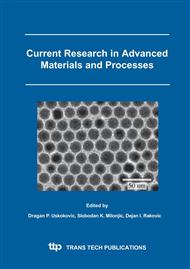p.481
p.487
p.493
p.499
p.507
p.513
p.519
p.525
p.531
A Kink-Soliton Model of Charge Transport through Microtubular Cytoskeleton
Abstract:
Contemporary trends in science and technology are characterized by integration of biological and technical systems, like in nanotechnology, nanobiology, and quantum medicine. In our case, we were motivated by a necessity to understand charge transport through microtubular cytoskeleton as a constitutive part of acupuncture system. The high frequency component of acupuncture currents, widely exploited in microwave resonance stimulation of acupuncture system in the past decade, implies that explanation of the cytoplasmatic conductivity should be sought in the framework of Frohlich theory. Accordingly, in this paper we critically analyze the problem of the microwave coherent longitudinal electrical oscillations as a theoretical basis for understanding soliton phenomena in microtubules, showing that charged kink-soliton nonlinear microtubular excitations might be a good candidate for charge transport in microtubules.
Info:
Periodical:
Pages:
507-512
Citation:
Online since:
September 2005
Authors:
Price:
Сopyright:
© 2005 Trans Tech Publications Ltd. All Rights Reserved
Share:
Citation:


